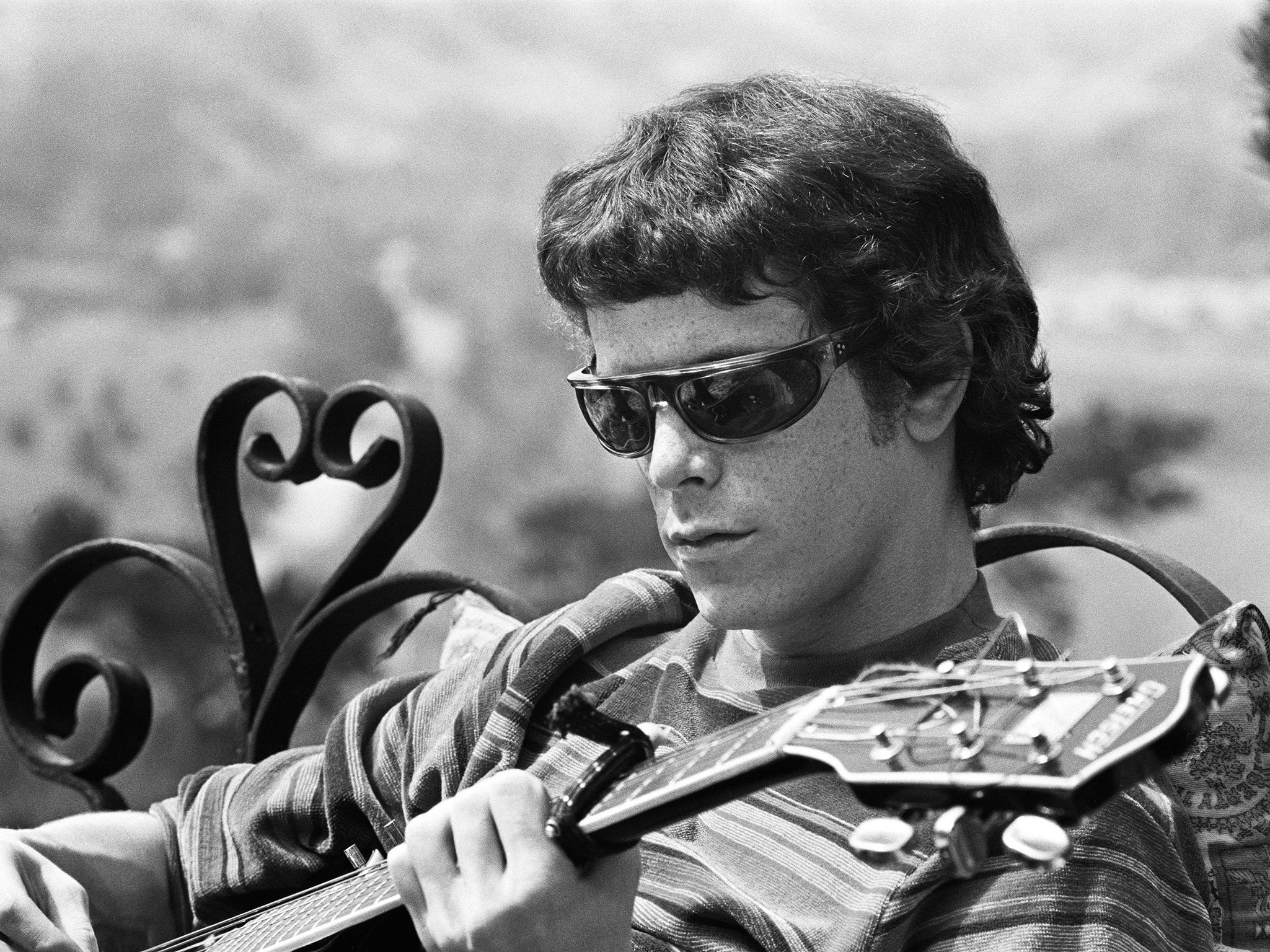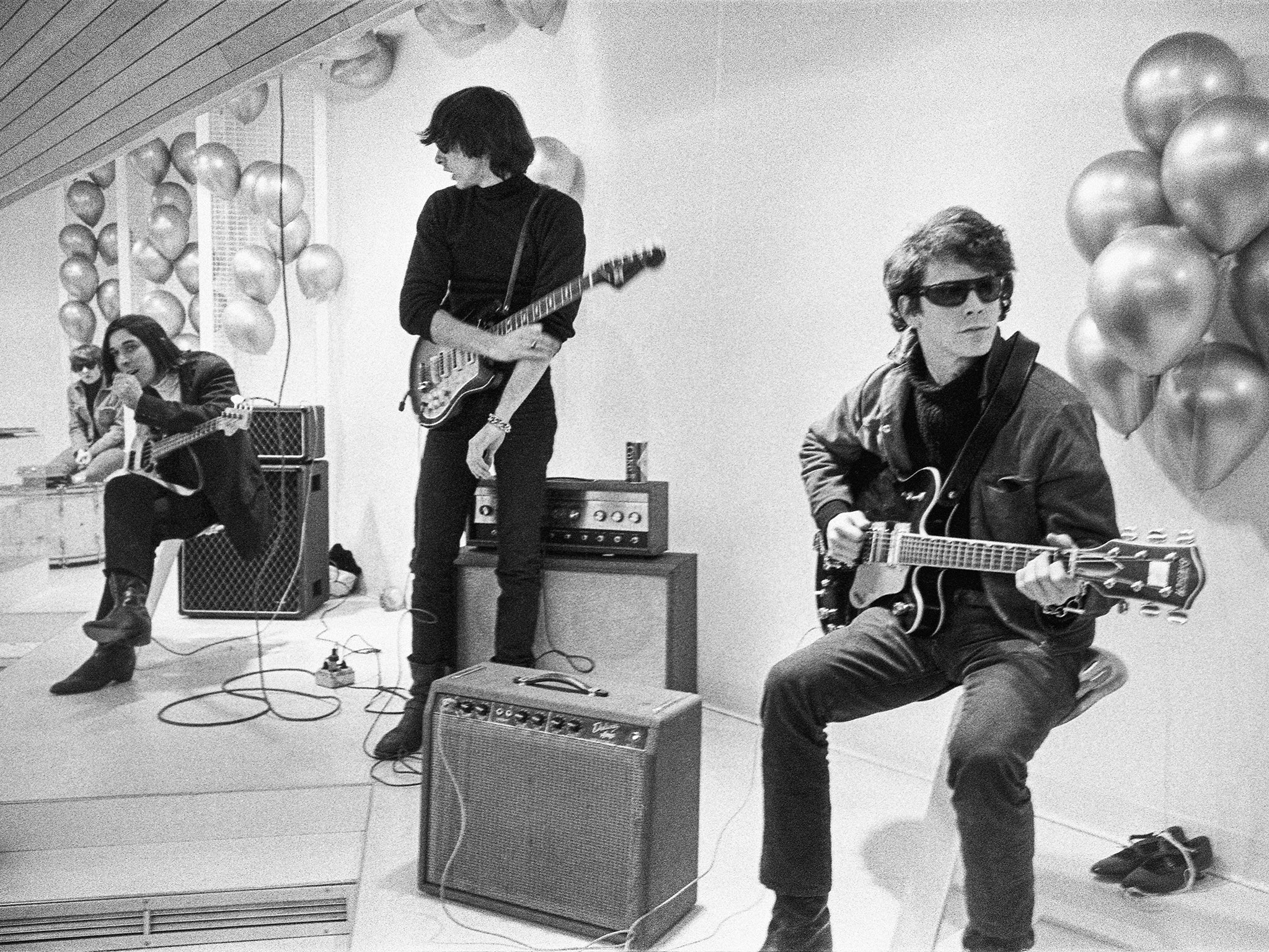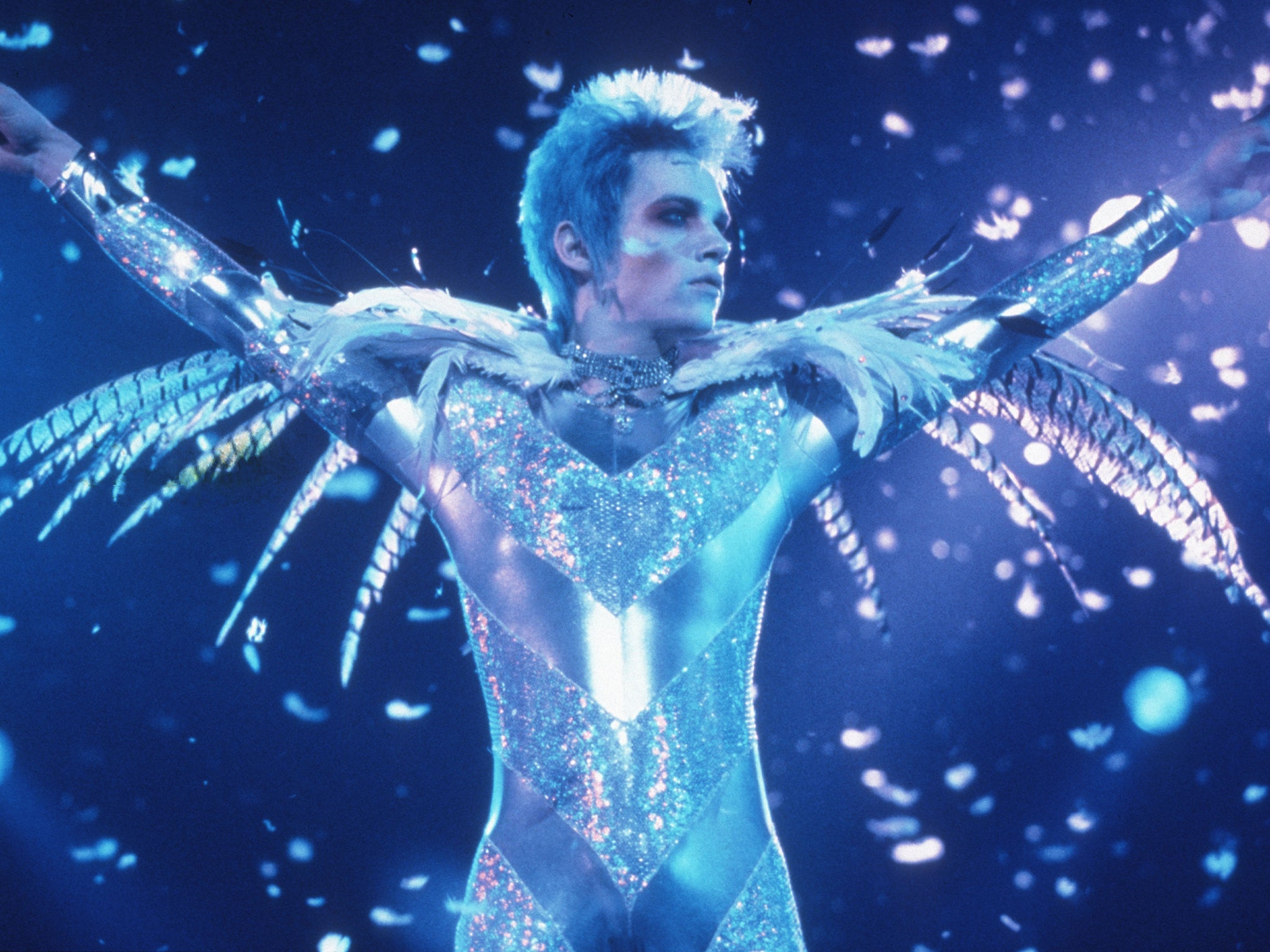Todd Haynes on The Velvet Underground: ‘Warhol’s Factory offered equal opportunity objectification’
The Oscar-nominated filmmaker behind ‘Carol’ and ‘I’m Not There’ has made his first documentary, one that explores the beauty, nihilism and melodrama of The Velvet Underground. He talks to Chris Harvey about their unflinching transgression and creative legacy, and why he chose to leave their sex lives out of the picture

Your support helps us to tell the story
From reproductive rights to climate change to Big Tech, The Independent is on the ground when the story is developing. Whether it's investigating the financials of Elon Musk's pro-Trump PAC or producing our latest documentary, 'The A Word', which shines a light on the American women fighting for reproductive rights, we know how important it is to parse out the facts from the messaging.
At such a critical moment in US history, we need reporters on the ground. Your donation allows us to keep sending journalists to speak to both sides of the story.
The Independent is trusted by Americans across the entire political spectrum. And unlike many other quality news outlets, we choose not to lock Americans out of our reporting and analysis with paywalls. We believe quality journalism should be available to everyone, paid for by those who can afford it.
Your support makes all the difference.Todd Haynes was still a toddler when John Cale met Lou Reed in New York in 1964. He was six when The Velvet Underground & Nico was released – that slow-detonating explosion that caused a mutation in the genetic code of rock’n’roll. As a precocious seven-year-old visiting San Francisco for the first time in 1968, the future director of Far from Heaven and Carol took home a poster of Franco Zeffirelli’s wildly romantic Romeo and Juliet and put it up above his bed at home in suburban Los Angeles.
Haynes would not “discover” The Velvet Underground until he was at college years later. Yet his early career, especially his breakthrough film, Poison (1991) – a defining work of that decade’s New Queer Cinema movement – “owed so much,” he says, “to a kind of ferocity and defiance that The Velvet Underground opened up.” And, at 60, with his first documentary, Haynes has made a film, The Velvet Underground, out today on Apple+ and in selected cinemas, that captures something truly beautiful about the band and the time and place in which they came into being: a beauty that has facets of degradation, brutality, nihilism, narcissism and danger.
In fact, the black-clothed New York f*** you art cool that Haynes captures so perfectly is how I come to be talking to him in a London hotel room about his childhood in Sixties California. He grew up in the San Fernando Valley, where the reverberations of hippy flower power would be gently washing for the next decade; the sonic shockwave of The Velvet Underground’s detuned guitars and sadomasochistic death urge were from a darker place. The band’s drummer Mo Tucker puts the collision between the opposing world views of East and West Coast succinctly in the film. “This love peace crap,” she says, “we hated that. Get real.”
Haynes, who in moving to New York after university realised “this is who I wanna be”, applied a similar antipathy to the world view of Ronald Reagan’s America during the AIDS era. Films such as Poison and Tom Kalin’s Swoon, he says, “were responding to the crisis around AIDS and a panic around gay people… by challenging conventional notions of liberation as strategies towards representation and trying to make the minority culture more palatable to the mainstream… it was standing up for the transgression.”
There’s still something of the young radical about Haynes, and of the even younger artistic prodigy he once was: the rapidity of his speech, the ideas that pour from him; his indie charm. There’s a boyishness to his look, too – hair that still curls between preppy-short and stoner-long; red plaid shirt over black tee that name-checks one of his heroes, the late German auteur Rainer Werner Fassbinder.
Transgression, of course, was one of the elements that Reed embodied in The Velvet Underground, with his lyrics about trans women, fellatio, sex whippings and buying and injecting heroin, which ensured that radio stations wouldn’t play the band’s records. In the film, a college friend talks about how Reed’s early poetry was “very heavy on… very dark gay themes”, with the singer telling him, “if it’s not degrading, it’s not hot, it’s not sex”.
Does Haynes think Reed was the first “out” rock star? “The word ‘out’ doesn’t belong to this time in The Velvet Underground, in the Sixties,” he says. “But as early as 1972, when he joined David Bowie for his second solo endeavour, Transformer… it was a complete and total embrace of the gay liberation vernacular: ‘We’re coming out/ Out of our closets/ Out on the streets’,” he sings the lyrics. “These are the words of Lou Reed. He realised that he had inaugurated something. And it was being manifest by this next close generation of music makers… And he jumped right on it.”
He’s referring to the glam rock era, when artists such as Bowie “and even Gary Glitter… necessarily queer looking, many of them straight male artists [were] mincing up and down the stages of rock’n’roll arenas”. Was it disappointing to him then that Reed, rather like Bowie, seemed to backtrack on an expression of his queerness later?
“I was certainly disappointed… I was probably more closely tracking Bowie’s renunciations of his bisexual self by the Eighties than I was Lou Reed’s at that time, and they were disappointing, and I think a lot of us took that somewhat personally.
“But I think one can understand it and see it with more complexity when you look at a whole career. And you understand that these are just people and they are subject to the cultural and political forces [of the time]. They’re not determining them themselves, and they shouldn’t have to have that responsibility – they’re artists. And both Lou Reed and David Bowie had great desires for commercial success that always sort of… wrestled with their experimental instincts and exploratory instincts .”

Reed found the perfect foil for those instincts in Cale, a classical musician with an intensity that had taken him all the way from the Welsh valleys, via Goldsmiths’ College in London, to the heart of the New York avant-garde of John Cage, Cornelius Cardew and La Monte Young. Cale was embedded in the Downtown art scene, part of The Dream Syndicate with Young, playing amplified drone music tuned to the refrigerator in his Lower East Side apartment for an hour and a half every day. Then he met Reed, a house songwriter for Pickwick Records, in Long Island City. “There was a lot of eyeballing going on,” he reports in Haynes’s film.
Open hostility would come later but it could wait. Soon they were sharing the same apartment, and Cale was driving them towards an uncompromising sound to match Reed’s uncompromising lyrics – one very different from the acoustic singer-songwriter format in which they arrived. The addition of Sterling Morrison on guitar and Mo Tucker on drums completed the classic Velvets line-up (and this John Doran piece in The Quietus is brilliant on the importance of Tucker to their sound). Haynes carefully delineates the priming of this musical IED without recourse to a parade of stars assessing its impact: “There are countless people who are so interesting and so talented… could tell us what The Velvet Underground meant, why they were great and how they influenced them,” he says. “And I just didn’t want a movie that told you all those things, I wanted you to maybe be able to find that yourself. And hear that yourself. And it was gonna be too much talk. So it was really simple to just say, ‘OK, just people who were there. That’s it.’”
It’s this decision that allows the film to take flight. Haynes and his partner of almost 20 years, Bryan O’Keefe, have deep-dived into experimental film of the time, scouring 600 hours of footage to create a kaleidoscope of visual riches, in which the conjunction of The Velvet Underground with Andy Warhol and the artists, film-makers and “superstars”, such as Nico, who surrounded him feels somehow inevitable. It’s unmistakeable in these images that almost everyone looks cool, everyone looks beautiful. Film critic Amy Taubin appears alongside her Warhol screen test, and makes the point that the scene around The Factory “was not good for women” because of Warhol’s fascination with “some ideal of female beauty, and if you didn’t measure up – and who ever could measure up? – that was very damaging”. Haynes cuts her voice saying it to an image of Nico looking luminous. I wonder what the director, who looks again and again in his films at women in situations that are “not good” for them, made of Taubin’s view. “I was so interested in what Amy had to say – she was there… interestingly, though, I think people will have a range of opinions about that very fact, in that we’re still talking about a very homosocial culture in The Factory, and everybody was objectified, because they were all being looked at, for their beauty and their photographability, and who was going to be in the next movie that they were going to shoot that afternoon, and which hot boy was going to take his shirt off, and which beautiful girl was going to pose… It was sort of equal opportunity objectification.
“And of course, people were flirting and going into the backroom and having sex, but more often it was men with men. [Warhol superstar] Mary Woronov describes a culture that just wasn’t that goal oriented in terms of sex, that there was a lot of posing and flirting and, you know, kind of provocation going on? But there was also a kind of impotence, which sometimes is a side effect of the kind of drugs that they were using.”

Haynes turns away from a glossy, gossipy portrait – for example, unlike most films that depict The Factory, there’s little direct reference to one of its most endlessly discussed personalities, which it turns out was deliberate. “I talked to John Cale about things I’d read about him having an affair with Edie Sedgwick in the first month of him going to The Factory, exactly at the moment when Lou Reed was having an affair with Nico, he shared all that. But then he also was like, ‘Yeah, but, you know, we’re all in our early twenties. And people were having sex a lot in those years.’”
Haynes wanted to focus on the artistic origins of the music and the people, he says, rather than their personal lives, or sex lives or even their drug practices. “When I talked to everybody and asked them about their sex and their drug lives, they were always a little dismissive of it. And I was like, OK, I get it… they weren’t there for the drugs. The drugs were there for the art.”
In the best examples of melodrama as a genre, the beauty is part of the cage in which all these people live
Sex, likewise. “There’s a great fascination… but let’s be real: most people that age, no matter what they look like, are trying to have sex with each other. And usually it doesn’t really last and it doesn’t really distinguish those people from other people, [or] gay people from straight people. And I don’t think Nico was gonna have sex with anybody that she didn’t want to have sex with. That said, the competition within The Factory must have been intense. And the feeling of ‘who’s being looked at more’ and ‘I must be not as good looking’ and the way that gets carried out into your everyday life as a woman, it’s a whole different discussion.”
Doesn’t Haynes himself often make people, women especially, look very beautiful in his films? Is an ideal of beauty something he shares with Warhol?
“It’s funny, because what’s so interesting to me about the melodrama as a genre, in its best examples, is that the beauty is part of the cage in which all these people live. The enamel beauty of the [Douglas] Sirk-ian set and home and lighting and objects and clothes and women is part of the claustrophobia and of the sort of killing aspects of middle-class life. So the beauty is rarely ever felt as transcendent.
“But, of course, I love to make the image incredibly rich and specific to the time and place and absolutely in Velvet Goldmine (1998), it was about a physical beauty that was inherent, and a kind of cosmetic beauty that men adopted in the glam era, and androgyny and all of those things, but also kinds of beauty that questioned prior models of how men can be beautiful or, you know, what’s the divide between male beauty, female beauty, gay desire, straight desire, all those things were blurring. So that was part of the visual language. So I’m completely guilty of wanting the films to be…” He pauses. “When I think of a film idea, I usually close my eyes and it’s like some rich…” He pauses again, inside this vision now, “… like I wanted Far from Heaven to be heartbreakingly beautiful and full of sadness. So the beauty didn’t make anybody feel good.”

It will be fascinating to see what Haynes does with Natalie Portman and Julianne Moore in his upcoming May December; it’s about a Hollywood actress visiting the real-life woman she is about to play in a film about the tabloid scandal that engulfed her 20 years earlier. He is also making a biopic of the singer Peggy Lee (which, it has been reported, may have Billie Eilish among its executive producers) named after her signature song, “Fever”. Having already made Velvet Goldmine (loosely based on the coming together of David Bowie, Lou Reed and Iggy Pop in the 1970s) and I’m Not There (about Bob Dylan) and his cult college film Superstar: The Karen Carpenter Story, has Haynes learnt anything specific from making a music documentary that will influence his approach?
“I don’t think in any direct way. I always start with, in any film – but particularly a film about a musical artist – the question is always how to find a visual style, a language, through the lens, that gets, in a visual parallel, close to what they were doing in their music… but I want Michelle Williams [playing Lee] to perform the music live, so there will be an element of something live and in the room, which is quite different from anything I’ve done, and yet it’s quite different from this movie because there doesn’t exist anything of them in the room from the years that they were putting out records.”
It is a mark of the triumph of Haynes’s The Velvet Underground that it’s possible to come away from the film without ever being aware of that absence.
‘The Velvet Underground’ is out today on Apple TV+ and in selected cinemas



Join our commenting forum
Join thought-provoking conversations, follow other Independent readers and see their replies
Comments